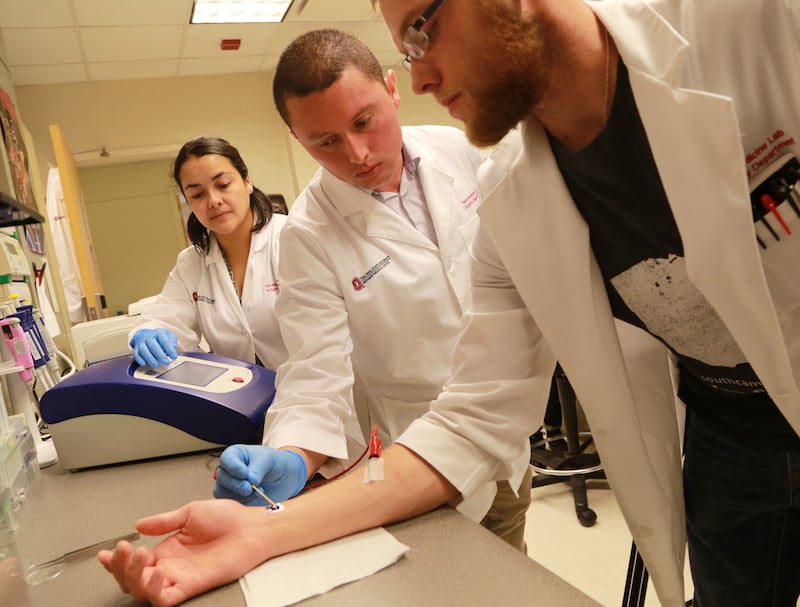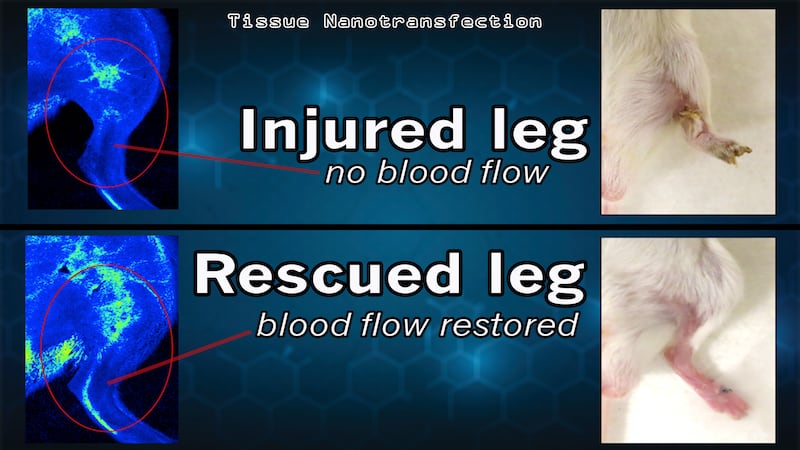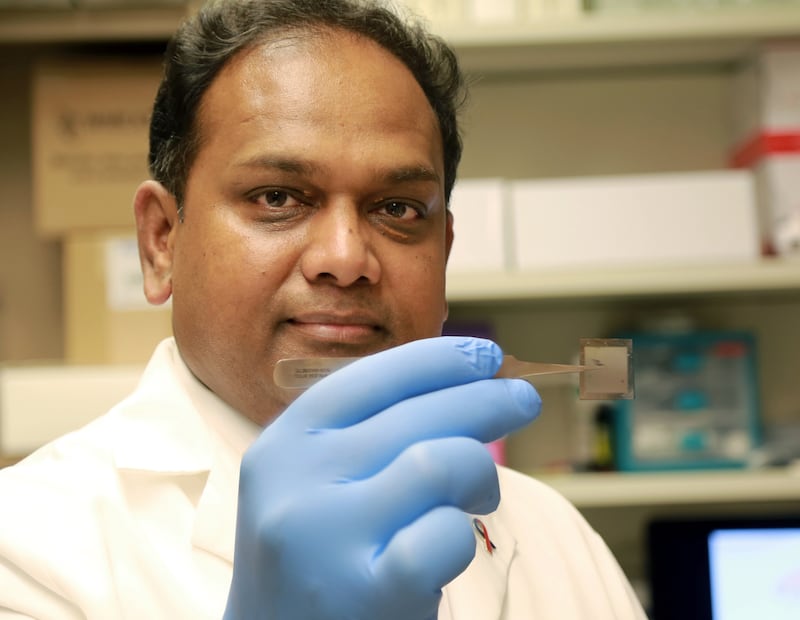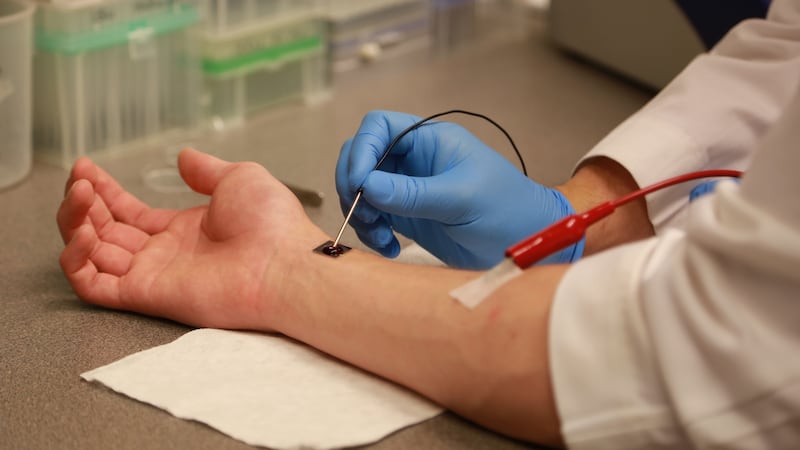Severe injuries can take a long time to heal, but it appears scientists have figured out a way to repair damaged tissue in a matter of days using non-invasive technology.
The coin-sized device, known as the Tissue Nanotransfection (TNT), has only been tested on mice and pigs, but the scientists say their prototype holds promise and could pave the way for using nanochip technology to reprogramme cells to replace tissue – or even whole organs – in the future.
While it may sound like the stuff of science fiction, researchers at the Ohio State University say they were able to speed the healing process in injured tissue by using the TNT to convert cells through electrical stimulation and targeted release of genes.

With just one touch, the chip – when placed on the skin in the affected area – works by using an electrical field to convert adult cells from one type to another by delivering specific genes to the tissue underneath it.
For example, in the case of a mouse with an injured leg that lacked blood flow, the researchers were able to reprogramme skin cells to become vascular cells, allowing new blood vessels to grow. The damaged leg was saved by the end of the second week and healed by the end of third.
In another case, the researchers reprogrammed skin cells into nerve cells, which were then injected into brain-injured mice to help them recover from stroke.

“By using our novel nanochip technology, injured or compromised organs can be replaced,” said study author Chandan Sen.
“We have shown that skin is a fertile land where we can grow the elements of any organ that is declining.”
The TNT technology is made up of two components. The first is the tiny nanotech chip that sits on the skin, and the second is the biological cargo – ie special genes – that stimulates cell growth in the tissue underneath.

When the chip is fed harmless electrical charge, it releases the cargo into the cell membranes.
The whole process lasts less than a second.
“This is difficult to imagine, but it is achievable, successfully working about 98% of the time.
“With this technology, we can convert skin cells into elements of any organ with just one touch.”
There’s still a long way to go before we could use this process on our own bodies, but the researchers say they are refining the technology and plan to start clinical trials in humans next year.
The research has been published in the journal Nature Nanotechnology.







